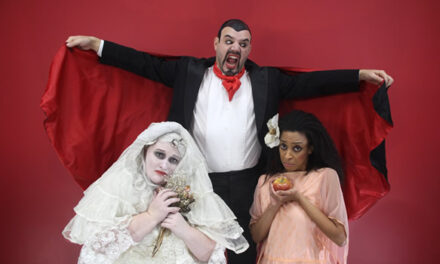There are times when a well-conceived concert is such an integral whole that it would be a mistake to review the musical selections one at a time. Such was the case for a program of solo cello music presented by Franklin Keel on Sunday under the auspices of Pan Harmonia to an audience of about fifty. The venue was St. Mary’s Episcopal Church in North Ashville, a small century-old brick sanctuary with fine acoustics.
Keel’s program included the preludes from each of J.S. Bach’s six suites for solo cello (and the fugue which follows the prelude from Suite No. 5), interleaved with 20th-century works by George Crumb, Ernst Bloch and Benjamin Britten. The verbal commentary between pieces went far beyond “introducing the next work.” It was an introspective commentary on Bach’s musical life and the effect these six suites had on other composers and on serious cellists everywhere. Keel, who has played the Bach suites since he was a teenager, titled his concert “Inspired by Bach.”
When he was first in our community, freshly graduated from the Eastman School of Music, I would have called him talented, young, and brash. Now, only a few years later, I would describe him as talented, mature, and thoughtful. This concert displayed his mastery of the cello and provided a platform for him to deliver a commentary that was never dry but always factual. He is a perceptive musician who delves into the deep nature of the music he plays.
Keel mentioned that Bach’s Suite No. 2, in D minor, written shortly after the early death of Bach’s first wife, shows Bach’s sorrow. He mentioned that George Crumb dedicated his Cello Sonata to his mother and that the first movement (which we heard) is a Fantasia, a musical form from the baroque era but with very different 20th-century harmonies. He pointed out the harmonic inventiveness that Bach put into his Suite No. 4, with excursions into keys far from the home base of E Flat major. The first two movements of Ernst Bloch’s Suite No. 1 are similarly forms that Bach would have recognized: a Prelude and an Allemande.
From Bach’s Suite No. 5, Keel chose to play both the Prelude and the Fugue that is, in effect, the second movement. This suite is in C minor, a key signature many great composers have used for their most serious works. In this fugue, Bach manages to indicate fugal counterpoint while giving us just one voice at a time. The Bach prelude and fugue was followed by the Canto and Fugue from Benjamin Britten’s Suite No. 1 (the first of three for solo cello). The first passages of this fugue contained more notes than Bach might have needed to indicate the same musical thought. Britten is a fine composer, but like the rest of us he was a mere mortal. Bach is divine. That is one lesson that this concert conveyed.
The final selection for this integrated program was the Prelude from J.S. Bach’s Suite No. 6. Keel prefaced this challenging work by pointing out that it was originally written for a five-string cello and provides unusual challenges to a modern cellist. He met this challenge.
I found myself thinking back on memorable live performances I have heard by cellists: Gregor Piatigorsky, János Starker, Leonard Rose, Yo-Yo Ma, Zara Nelsova (to whom Bloch dedicated his suites for solo cello) and Mstislav Rostropovich (to whom Britten dedicated his suites for solo cello). There are scholars, teachers and conductors on this list, intellectuals as well as great technicians. We are fortunate to have in Western North Carolina our own skilful cellist who is a similarly thoughtful musician.












